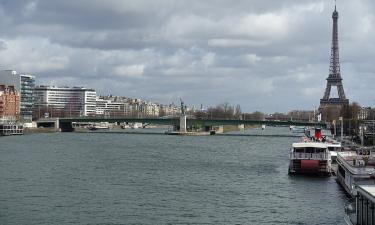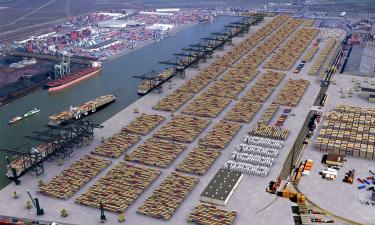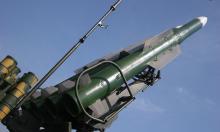Dedicated to the second anniversary of the Kursk disaster
On August 12th, 2000, the Kursk nuclear submarine with 118 crewmen aboard sunk 157km north-west of Severomorsk. All crewmen were killed. On August 23rd, the whole country was mourning the submariners who never returned from the mission.
Information about the shipwreck first appeared in the late hours of August 12th. The submarine was located about 05.00 a.m. on August 13th. At 07.00 a.m., Defence Minister Igor Sergeyev reported to the President that the submarine had been found and the Navy would try to save the crew. In the early hours of August 13th, rescue vessels arrived in the area. There were two attempts to save the trapped submariners by means of submarine vehicles, which were to dock to the sub.
The Kursk crewmen were signalling that they were still alive till August 14th. That was the "SOS, water inside" signal. Experts believe the majority of the crew was killed immediately in the explosion or got drowned in the water which rushed into the hull following the blast.
On August 14th, the Russian authorities set up a governmental commission headed by Vice-Premier Ilya Klebanov to investigate the cause of the disaster.
On August 15th, Admiral of the Fleet Vladimir Kuroyedov, the Commander-in-Chief, Russian Navy, reported that the submarine's hull was being examined, crewmen were maintaining stable sound contact, nuclear background in and outside the submarine was normal. The Priz submarine vehicle approached the man-of-war to install a special rescue vehicle on the submarine's hull. The examination of the hull revealed disastrous damages of the ship's bow, the submarine was lying on the sea floor with the periscope up.
On August 16th, brand-new Bester rescue vehicles capable of transporting 20 people, joined the rescue operation. They made several attempts to dock to the submarine, but failed because of a strong underwater stream.
Putin classified the situation as grave and critical. The British Defence Minister and US Defence Secretary offered any assistance, which was necessary to save the crew. The same day, the Russian Foreign Ministry submitted an official request to Great Britain and Norway to render assistance to save the crewmen of the submarine.
On August 17th, units of the Russian Northern Fleet continued the rescue operation alone. Further examination of the Kursk hull revealed that the hatch of the escape chamber, the main rescue vehicle of the submarine, had been damaged. The operation involved all three submarine vehicles, but all of them were failing to dock to the submarine.
On August 18th, all tempts taken by rescue vehicles to dock to the man-of-war once again resulted in a failure.
On August 19th, the operation to rescue the Kursk obtained the international status. The Norman Pioneer vessel with British rescuers and a mini-submarine on board arrived in the sector.
On August 20th, the Norwegian Seaway Eagle vessel with deepwater divers on-board also arrived there. An underwater robot operated from aboard the vessel examined the sub's hull and hatches, as well as took pictures for subsequent evaluation of the situation on the seafloor and of security measures of future rescue works.
The examination proved that practically the whole of the submarine was flooded, the escape hatch damaged severely and divers would have to carry out all works manually.
On August 21st, the Norwegian divers managed to open the external hatch of the submarine. There were no people inside. Later on, the divers opened the internal hatch of the lock chamber and saw that the 9th compartment was flooded.
At 05.00 p.m. August 21st, Vice-Admiral Mikhail Motsak, Chief of Staff, Russian Northern Fleet, officially confirmed that all crewmen of the NSB K-141 Kursk were dead.
On August 22nd, the Russian President issued a decree declaring August 23rd the mourning day and flew out to Severomorsk the same afternoon.
On September 19th, Vladimir Putin took a decision to launch an operation to retrieve the Kursk crewmen and salvage the submarine.
The operation to retrieve the submariners' corpses commenced on October 25th and was halted on November 7th 2000.
On May 18th, 2001, Russia concluded a contract with the Dutch Mammoet Transport BV Company to salvage the Kursk nuclear submarine.
The first stage of the salvage operation started on July 16th, 2001, which included the separation of the sub's first compartment from the rest of its hull and the cutting of technological holes. The second phase was to lift the Kursk.
In the late hours of October 7th 2001, the operation to salvage the Kursk nuclear submarine from the Barents Sea floor started. The submarine was lifted from the sea floor by means of 26 lifting grabs installed on board the Giant-4 barge. On October 10th, the towing of the barge with the attached submarine to the Roslyakovo shipyard of the Russian Navy was successfully completed.
By March 20th, 2002, there had been found and identified 115 out of the 118 crewmen.
The operation to salvage the Kursk's first compartment started in late May and ended in early June 2002.
The governmental commission to investigate the cause of the disaster ruled out all versions but one - "a torpedo explosion." This information was disclosed on June 19th, 2002 by Russian Industry, Science and Technology Minister Ilya Klebanov.
On July 26th, 2002, Russian Prosecutor General Vladimir Ustinov reported at a press conference that the Kursk had sunk because of an explosion whose epicentre was located in the fourth torpedo launcher armed with a practice torpedo /a training torpedo without a warhead/, which subsequently resulted in the detonation of other torpedoes stockpiled in the first compartment of the submarine.
Subscribe to Pravda.Ru Telegram channel, Facebook, RSS!





